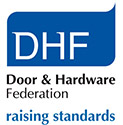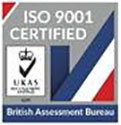If you’re a business owner, commercial landlord or employer, you’re responsible for the health and safety of the people who work in it – or who visit – and this includes fire safety.
This is true regardless of your industry, or your property – but industrial environments such as factories and warehouses are at particular risk of fire. Fuels and machinery provide an increased risk of fire, and building layouts may make an evacuation more complicated.
Let’s take a quick look at some of the key things you need to consider for fire safety and fire evacuations.
Fire risk assessments
If you’re in one of these roles that designates you as a “responsible person” for a premises, you’re required by law to carry out a fire risk assessment – and regularly review it to make sure it’s up to date. If there’s more than four people in the workplace, you’ll need to keep a record of the risk assessment too.
There are five steps to a fire risk assessment:
- Identify fire hazards. Hazards can be sources of ignition, fuel or oxygen, so machinery and chemicals in particular are a source of risk. But you should also consider more everyday flammable items like paper and cardboard, as well as trip hazards that could cause harm during an evacuation.
- Identify the people at risk. Pay key attention to the people at the most risk – i.e. people working directly with items identified as hazards. But be aware that everyone can be at risk, and not just staff – consider customers, deliveries, visitors of all kinds.
- Evaluate, remove, reduce and protect from risk. Essentially, reducing hazards as much as possible. It won’t always be possible to get rid of them completely in an industrial environment, but there is a lot you can to to reduce risk, and we’ve gone into that in more detail below.
- Prepare an emergency plan and train your employees. It’s not enough to hold it all in your head – you need to record hazards and what you’ll do in an emergency, and then make sure employees are aware.
- Regularly review and update your risk assessment. Busy workplaces are changeable environments, so this is an ongoing process.
Preparation
There’s lots that can be done to reduce the risk of fire – or at the very least the risk of harm from fire.
Fire doors and fire exit doors
Fire doors and fire exits aren’t the same thing, though they’re often confused and spoken about as though they are. Fire doors – also known as fire resisting doors – are meant to contain a fire, and are graded by the length of time that they will prevent a fire from getting through. These are the ones you’re meant to keep closed!
Fire exit doors, on the other hand, don’t have to be kept closed, but they do need to be kept clear. Their sole purpose, from a fire safety point of view, is to provide a quick exit in the event of a fire.
Exit routes
It’s not just doors that need to be kept clear – fire exit routes to the doors should also be kept clear. Placing desks, stock or machinery in the path to a fire exit will delay – or, at worst, completely prevent – people from reaching a fire door. Given that fire can break out at any time, leaving things in the way just for a while with the intent of moving it later really isn’t good enough. Fire exists should also be clearly signposted, and regularly tested to ensure they open easily.
Smoke detectors and alarms
Just like at home, smoke detectors and fire alarms need to be regularly tested. In fact, they need more regular testing than in the home – there’s a requirement for weekly testing under British Standard regulations.
Fire equipment
Fire blankets and fire extinguishers should be placed in easily accessible areas, protected from tampering, and should be replaced or refilled after use. Staff at particular risk should be trained in their use.
Fire drills
You’re required to carry out at least one fire drill per year, and record the results, such as how long it took for a full evacuation. Appoint fire marshals to co-ordinate in the event of a fire, and check that everyone is accounted for. Make sure everyone knows who the marshals are, and where assembly points are.
New fire doors and fire exits
Need a quote for new fire resistant or fire exit doors? Get in touch with the team at NGF today and we’ll be happy to help.
Back to all blog posts







